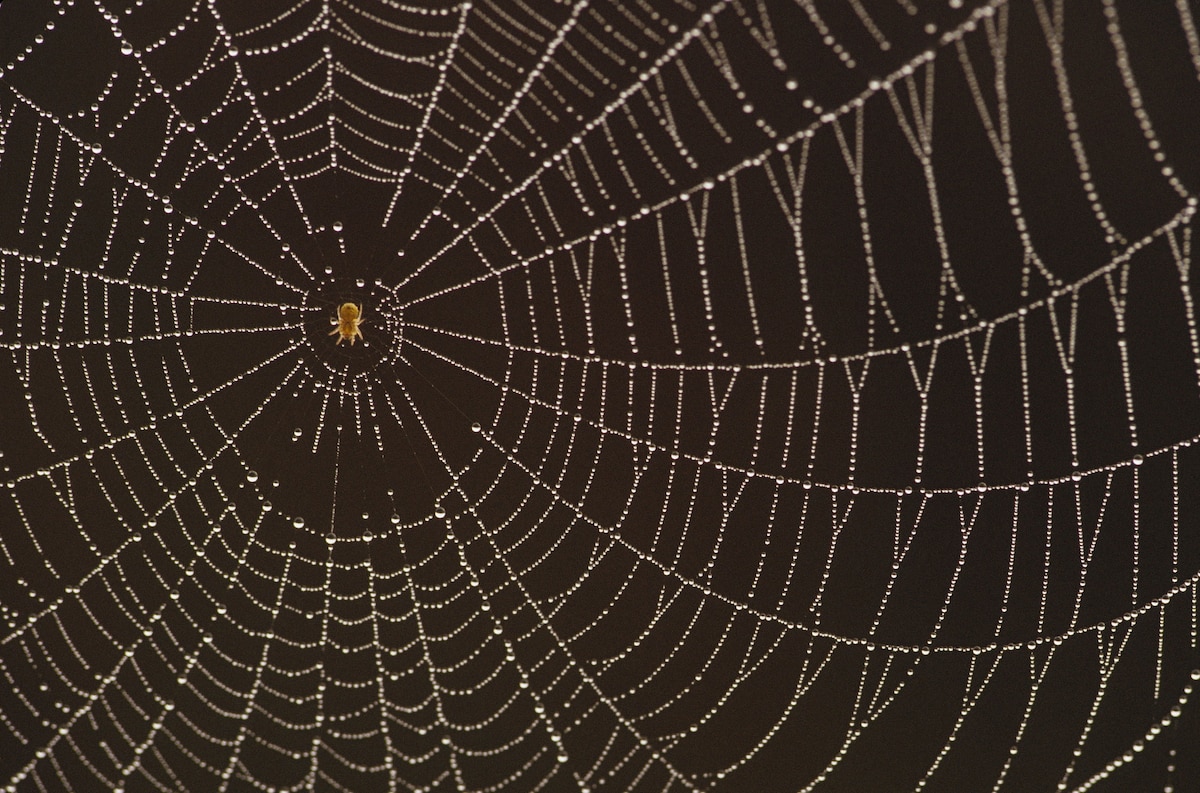Create a free profile to get unlimited access to exclusive videos, sweepstakes, and more!
What a tangled web spiders weave - and now we know how they do it in the dark
Spiders can build webs in the dark just by feeling around, meaning their brains are capable of unreal things.

Spiders have gotten a bad rap as eight-legged freaks terrorizing their human prey in movies like Arachnophobia and the original It, but we’ve underestimated these remarkable arachnids.
Peering into the world of spiders reveals more of a fantasy than a nightmare. Even though they have eight legs to work with, it is difficult to fathom how spider species that build webs can pull off such intricate structures in the dark. Never mind how their minuscule brains are capable of it. While scientists have regarded spiders with wonder because of their almost supernatural abilities, it had been extremely difficult to record them for further analysis — until now.
With the help of night vision and AI, researchers Abel Corver and Andrew Gordus of Johns Hopkins University led a study recently published in Current Biology after painstakingly watching every leg movement the spiders put into their webs. Their subjects were hackled orb weavers (which are endemic to the western U.S.). To give you an idea of how tiny their brains must be, one of these creatures can hang out on the tip of your finger.
“We were interested in how the web is a physical record of behaviors that are used to assemble it,” Gordus told SYFY WIRE. “It is essentially an emergent property of underlying behaviors, and even more impressive when built by an arthropod with only around 100,000 neurons.”
Humans have closer to a hundred billion neurons. That doesn’t necessarily mean the spider brain is primitive. When you compare the number of neurons to the ratio of their behaviors, it becomes evident that spiders are putting those hundred thousand neurons to use overtime. Leg maneuvers are what really create a web. Gordus, Corver, and their team put the spiders to work in a setup that involved infrared lights and machine vision AI that was trained to track limb movement frame by frame, so the researchers could find out every leg movement used.
Some ways in which the spiders used their legs especially stood out. Though webs are built in phases, leg sweeps were used in different phases as a way for an orb weaver to determine where it was and what was around it. Most spiders have eight eyes, but despite the impressive number of eyeballs, cannot see in the dark. They feel their way around with their front legs by using structural cues that are determined by how far along they are with building the web. It seemingly knows what to expect of where the web should be at depending on the phase.
This explains why spiders can even build decent webs in space.
“Web-making is akin to many of our own complex behaviors in that it is composed of smaller sub-behaviors that all have to be coordinated together in the correct order to achieve a successful web geometry,” Corver also told SYFY WIRE.
It turned out that the individual spiders went about building their webs in nearly the same way. This is thought to happen because the guide for building webs is already encoded in a species’ brain, kind of like an evolutionary download. Eventually, just the way a spider was positioning its leg told Corver and Gordus what part of its web it was tackling next. Indicators of different techniques and phases included leg sweeps, alternating leg movements, leg rotations, walking, slow or fast silk pulling, and whether the front or back legs were moving at all.
Spider brains can possibly tell us more about what goes on inside our own heads. Something the researchers especially want to understand is how a spider’s neurons make sense of movement programs over extended periods of time, in a way that enables them to build a web that holds up.
“Different brains, even those of different sizes, often share the same building blocks,” Corver said. “Although our recent study of web-making focuses on the behavior, it is an important step towards probing brain mechanisms.”
Future research on how spiders think will use mind-altering drugs to see how the spiders’ brain function changes, and therefore how the structure of the web changes as a result of that. While hallucinogens have been used on spiders before, Gordus is looking to fill in the gaps between function and structure. How hallucinogens modify web-building behaviors can give away the chemical pathways in the brain that these drugs have an effect on.
“We want to see whether these pathways utilized differently in different stages of web building,” he said. “Maybe we can build a model of web building based on these chemical pathways.”
These are just a few more reasons not to squash the next spider you see crawling around.


























